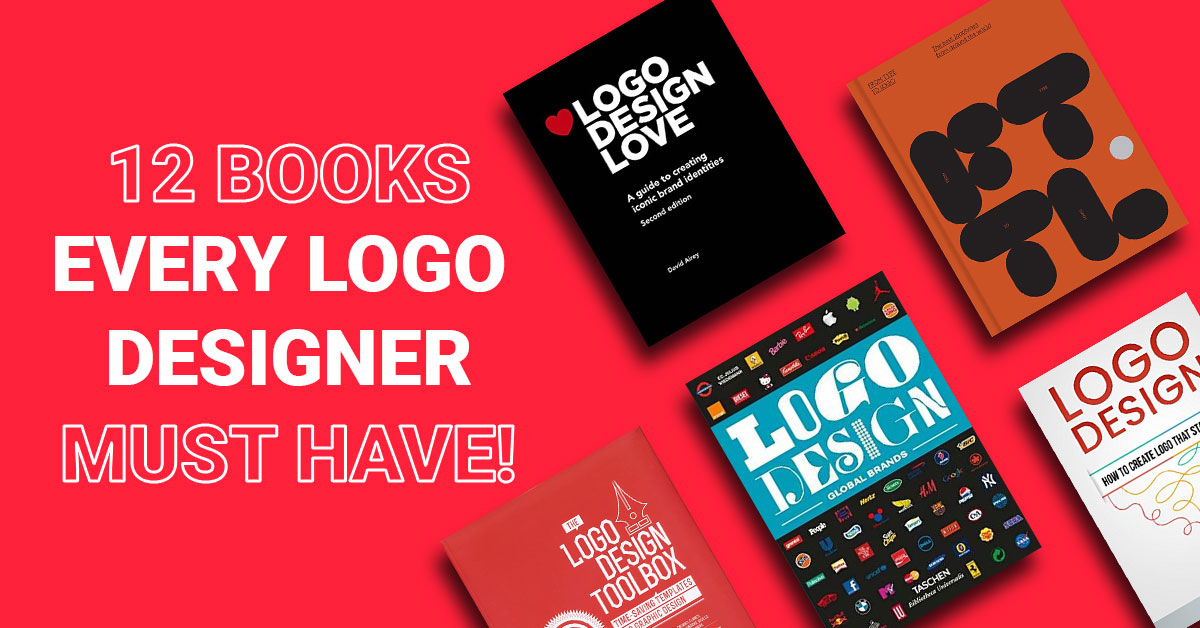A brand style guide takes the heart and soul of your brand—your mission, vision and values—and translates it into design. It also tells everyone exactly how to communicate your brand. So how do you create a brand style guide? We’ll show you how in five steps!
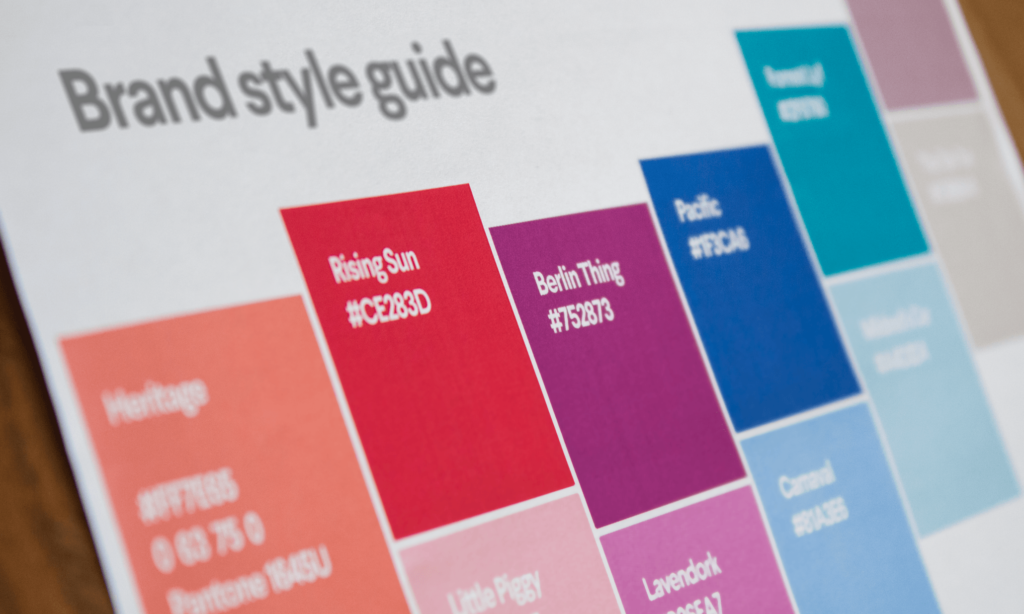
What is a brand style guide?
A brand style guide is a rulebook that explains how an organization presents itself to the world through its logo, font and color selections, photography and much more. Put another way, it’s a reference tool that helps maintain consistency in what a brand looks, feels and sounds like. It’s so powerful that some people even call it a brand bible, but don’t let that intimidate you—those are just different names for the same document.
Using a brand book ensures that your brand looks and feels the same, even when you have different people working on customer service, marketing, design and sales.
Why are brand guidelines important?
Think of your brand identity as your company’s personality. It’s how the world recognizes you and begins to trust you. If you see someone change how they look and act all the time, you won’t feel like you know who they are, and you certainly wouldn’t trust them.
Imagine a co-worker who always wears a dress shirt tucked into slacks, with his hair cut neatly short. Now imagine if that same person walked into work one day unshaven, wearing cutoff jeans and sporting a new tattoo of a tiger riding a motorcycle through flames. It’d probably feel uncomfortable because it’s not what you’re used to. You might even check in with him to make sure everything was okay.
The same logic applies to brands: inconsistency will confuse and alienate your customers. A style guide is important because it helps your business communicate in a consistent way across all teams and channels.
The key components of brand identity
Before you create a style guide, you need to know your brand. There are five key components: mission, vision, target audience, brand personality and core values.
Together, these are the most important things needed to establish your brand identity because they tell the world what you stand for. All the other parts of your brand style guide are tangible elements that communicate those key components to the world through design.
Mission and vision: Write a mission statement about why your company exists and a vision statement about where you want your brand to go. These can be big (you’re going to change the world) or small (you solves a small, annoying problem), as long as they’re true to your brand.
Target audience: Describe who your customers are and why they need you (i.e. how your products or services solve their problems). If you’ve done market research, include any insights that could help your team communicate more effectively to your customers. Here’s a deeper guide on how to define your target audience.
Personality: Make a list of 3-5 adjectives that describe your brand. This will set the tone for both design and writing. Are you sophisticated or quirky? Classic or trendy? Ask your team for input and perspective.
Tip: It can also be helpful to list 3-5 adjectives that your brand is not. In fact, many advertising agencies begin their branding projects with an “Is / Is Not” exercise.
Values: Determine the guiding principles for company decisions and actions. Memorable values will make it easy for your team to stay on-brand.
How to create a brand style guide in 5 steps
Step 1: Collect brand guide inspiration
You’ve heard the saying that a picture is worth a thousand words, right? Prep for your brand style guide by saving reference points that feel on-brand. For 99designs’ rebranding process, each team created a Pinterest board to show what the core values meant to them. This is a great exercise that gets multiple people at a company involved and helps to create buy-in.
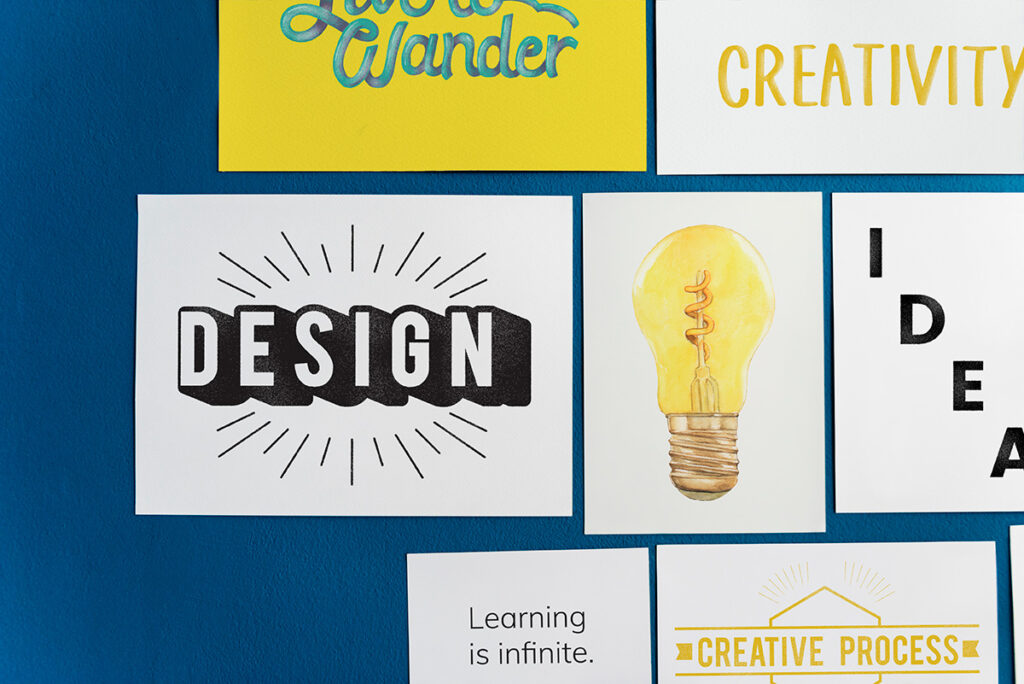
Think about:
- What’s worked for your brand in the past? Collect examples of successful ads, emails, mailers, etc.
- What do other brands do that you like?
- What questions come up repeatedly? Keep track of recurring feedback. If you notice you’re giving the same note to your writers and designers, it might be something useful to add to your style guide.
These will give you concrete examples to define the look and feel of your brand.
Make specific notes about what you like and don’t like (e.g. the image is on-brand but the text is not right). You may end up using some of these materials in the imagery or brand voice sections of your guide.
Step 2: Define the 6 essential brand guide elements
Once you’ve gathered your inspiration, it’s time to start working with a designer to start putting it all together. Choose a designer who communicates well and makes you feel comfortable. Brand design is a process of discovery, and your designer will be your partner in that process. She may have ideas or offer input that you hadn’t considered.
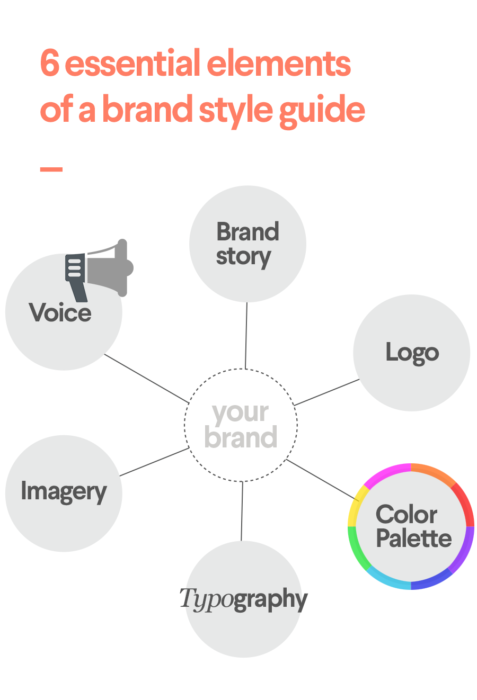
There are six essential elements that need to go in every brand style guide. These should be the first things you prioritize with your designer. Some of this may already be created (like your logo). But for others you’ll want to go back to your inspiration boards. A designer will help you take those moods, feelings and images and turn them into tangible brand elements.
Element 1: Brand story
Introduce your brand to the world. A simple summary will give people insight into the heart and soul of your company, which will help them understand how to represent your brand.
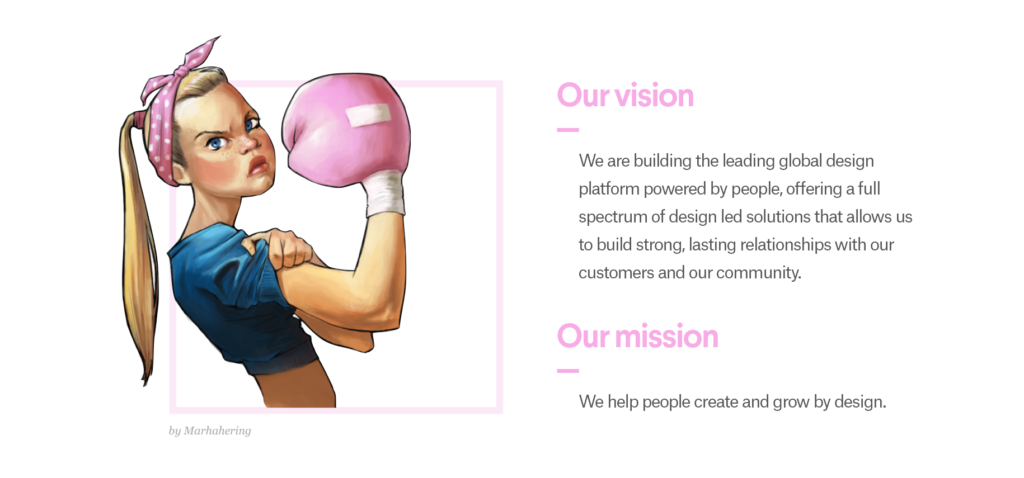
The five key brand components we discussed earlier—mission, vision, audience, personality and values—can all be included. Or you may choose to only share some of that publicly.
Gauge what to include by what would be most useful as a reference point. Everything else in your brand guidelines should hold true to these fundamental components.
Element 2: Logo guidelines
You may know what color your logo should be, but do you know how it’s going to look in different environments? This section of your brand style guide ensures your logo is used in the way you intended. It also prevents mistakes—like stretching, altering, condensing or re-aligning—that could send the wrong message.

Include all approved versions of your logo, describe when to use each one, and show visual examples to make it really clear.
- Size: List minimum size and proper proportions.
- Space: If logo requires a certain amount of white space around it, give clear instructions.
- Colors: Show variations (reversed, in color, black and white) and when to use them.
- Don’ts: It can be just as important to show how you don’t want your logo to be used.
Element 3: Brand color palette
Speaking of colors, defining a brand palette will go a long way towards creating a consistent look and feel. Most brands choose four or fewer main colors and don’t stray too far from the hues of their logo.

It’s a good idea to pick one light color for backgrounds, a darker color for text, a neutral hue and also one that pops. Heineken follows this rule of thumb to a tee.
In your style guide, show swatches of your brand colors. Make sure to include the information needed to reproduce those color accurately, wherever your brand message goes.
- Color match: PANTONE name and number
- Print color: CMYK
- Digital color: RGB and HEX codes
Element 4: Typography and font guidelines
Another big part of identity design is font selection. Your brand needs will dictate whether one typeface family will meet all your needs or if you want to define multiple brand fonts. A good rule of thumb is to use a different font than the one in your logo, since the contrast will help it stand out. A seasoned designer can guide you through this process.
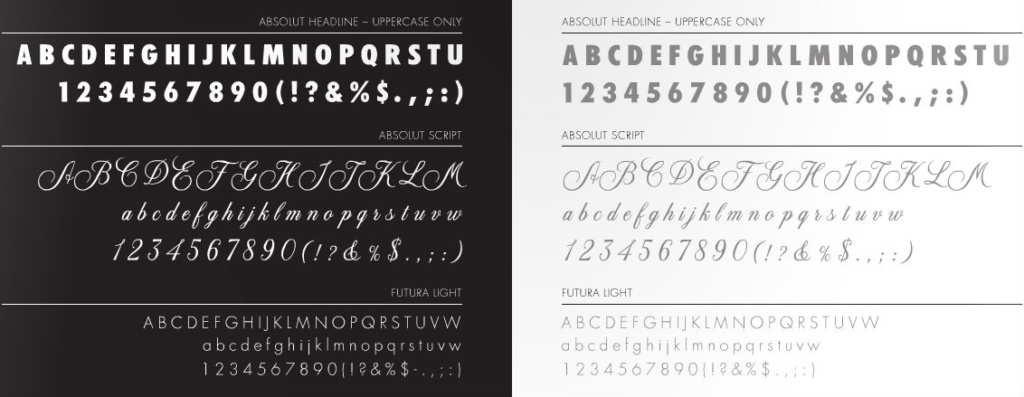
No matter how simple or complex your typography scheme is, make sure it’s used in all the right ways by explaining the choice and giving clear instructions for use.
- Introduce: Tell the story of the typefaces you are using, how they relate to your brand, and what each one is used for (headlines, body text, captions, etc.).
- Alignment: Make it clear if you want copy to always align right, left, or centered.
- Spacing: Include tracking and kerning ratios to maintain a consistent style when font size changes.
Element 5: Image guidelines
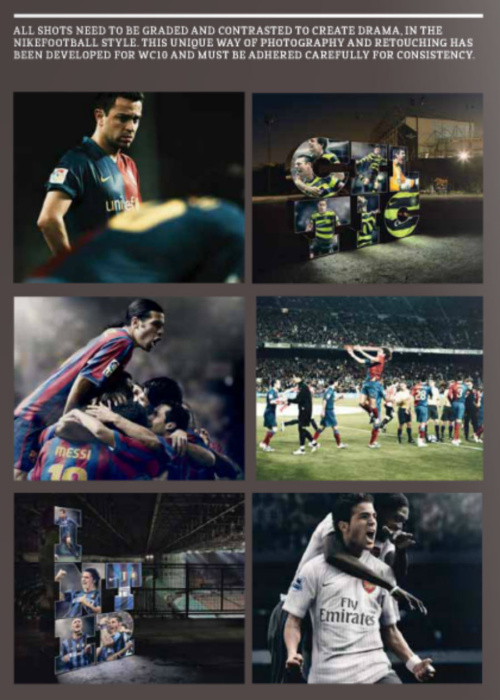
When it’s your company, you have a natural instinct for which photos and illustrations are right for your brand. The imagery section in your style guide will steer everyone else in the right direction without adding more approval to-do’s for you.
You can approach this in a few different ways. You might even use some of the inspiration points you gathered to prep for your style guide!
- Best practice: Show examples of images that have performed well for your brand. Make sure you address the main ways that your company communicates, whether it’s a print catalog or an Instagram account.
- Aspirational: If you don’t have all the examples you want for your brand, find what feels right from bigger brands. This will still give your team a sense of the style to align to, plus it never hurts to aim high!
- Mood board: Collect images that convey the feeling that you want people to get when they interact with your brand.
Element 6: Brand voice
Writing style doesn’t always jump to mind when thinking of brand identity, but brand voice strongly affects how your audience feels about you.

Just like with imagery, you can approach this in a few different ways.
- Best practice: If you have messaging that works well for you, show those examples here.
- Build on personality: Remember that list of 3-5 adjectives that describe your brand personality? Use that to describe the type of language that is on-brand.
- Do’s and don’ts: Sometimes, simple is best. Pick words you like and words you don’t to clearly demonstrate what your brand voice is.
Step 3: Make a list of other brand collateral your guide should cover
While almost every organization is going to need to include the six essential elements in a brand style guide, some will need to go deeper.
- Is your brand primarily digital? You probably need to codify how you layout images on your website.
- Do you sell physical products? Perhaps you need packaging guidelines that explain when to use the product name and when to use the company name.
- Are you focusing on social media marketing? Then you might want some guidelines on the types of imagery you use in your posts.
A brand style guide should fit the organization it belongs to. Start by making a list of any additional elements that you will need to cover in your guide. Here’s a handy checklist to get the ideas churning:
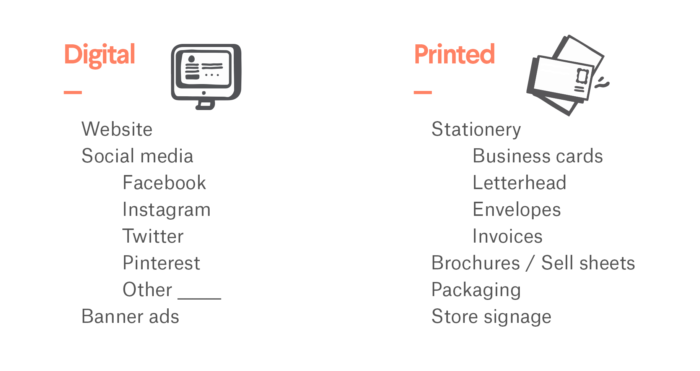
Step 4: Make an outline for your guide
Take your 6 essential elements, mix them with any business-specific needs and wants, and build yourself an outline! This will help determine the structure of our guide
- Brand story
- Hello, this is BRAND. Here’s what we make and do.
- These are our Mission, Vision, and Values.
- Logo
- Here’s our logo and what it means to us.
- How to use our logo.
- How not to use our logo.
- Color palette
- These are our colors.
- Here are pretty swatches with CMYK and HEX codes.
- Typography
- These are the fonts we use and why we chose them.
- This is our main typeface.
- This is our secondary typeface. Ooh how pretty!
- Imagery
- These are on-brand images.
- How to lay them out.
- Voice
- This is how we speak.
- Use these do’s and don’ts.
- Website
- Here’s what a the home page looks like and what you should/shouldn’t put on it.
- This is how we display products.
Once you have your outline, decide if you want your guide to live as a digital PDF, be available online, be printed, etc. You and your designer should connect on any specs (landscape vs. portrait layout, page size, etc.). Then you’re ready to go!
Remember this should be a working document. You’ll want to make sure that essential information is easy to find (perhaps via a table of contents?) and very clear.
Step 5: Put product packages in their best light
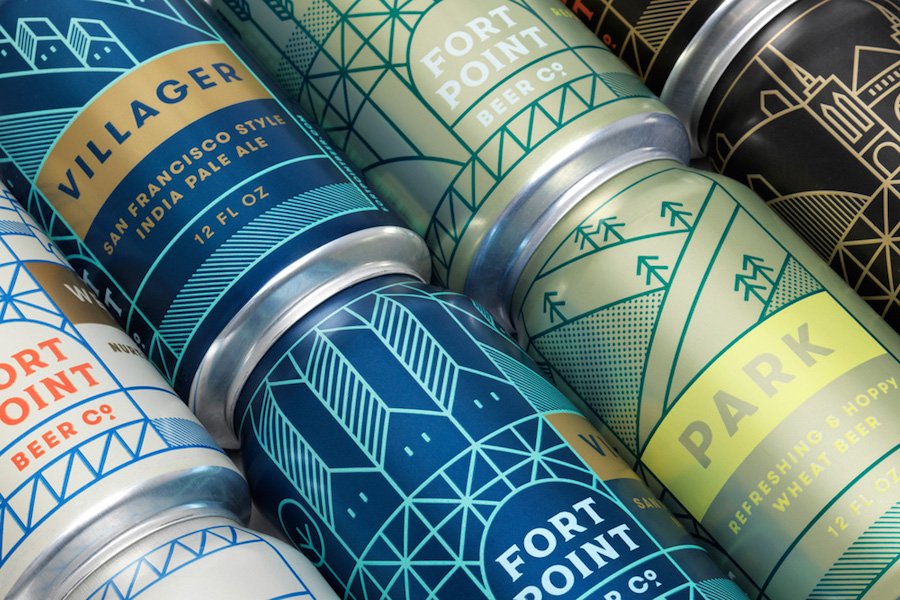
Showing off a product packaging design to a client is especially difficult, because you have to convey something three-dimensional using just two. Roll-outs are of course a necessary component, but it’s also a smart idea to show how the design will look in real life.
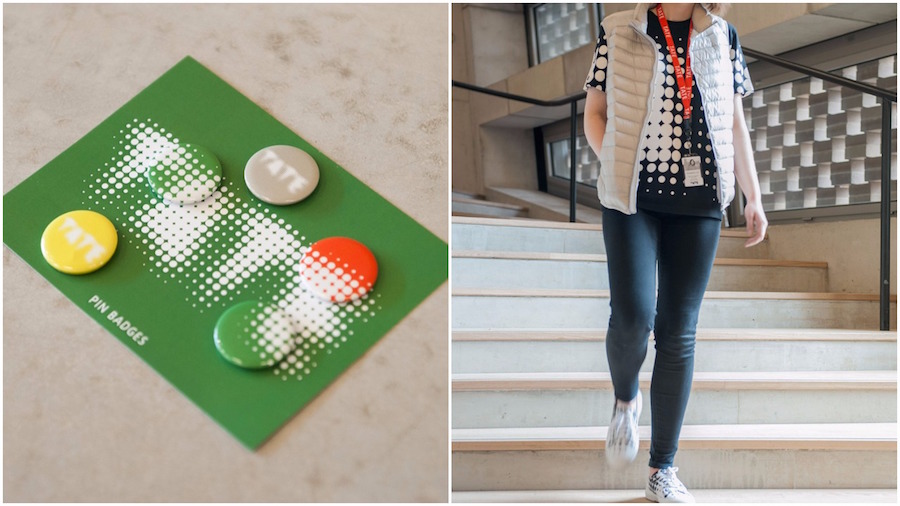
Like we said at the start, nowadays designers must assume that their design will appear absolutely everywhere, from tote bags to iPhone screens to architecture.
Lastly, don’t forget to keep in mind the hottest, newest technology.
You’re ready to create a brand style guide!
Your company is more than just the products or services you sell. A strong brand tells the world why they should choose you over all the other options on the market. A brand style guide tells your team how to stay true to that brand.
While some style guides are as thick as a novel, others are a simple one-page reference. It all depends on your business needs. The important thing is that it lists all your basic brand elements and can act as the singular point of reference for any future design project.
Check below some examples of my brand style guides to some clients. It might inspire you and follow them as a guide in your next projects.
https://www.behance.net/gallery/108607155/SocialDrives
https://www.behance.net/gallery/99170509/MarkaDev
https://www.behance.net/gallery/98480917/Al-Naseya-Cafe
https://www.behance.net/gallery/90841765/Konooz-Brand-Identity
https://www.behance.net/gallery/87968067/Ahmed-Samir-Logo
Post from: 99designs.com





